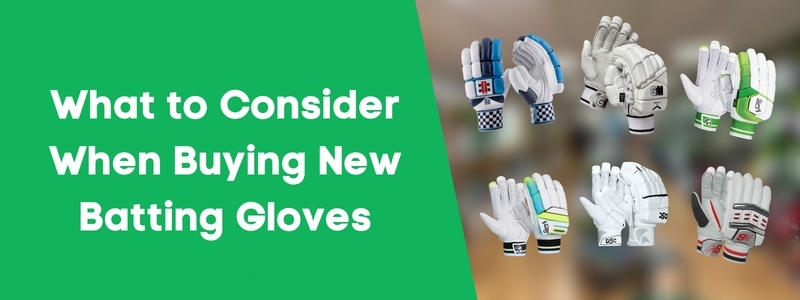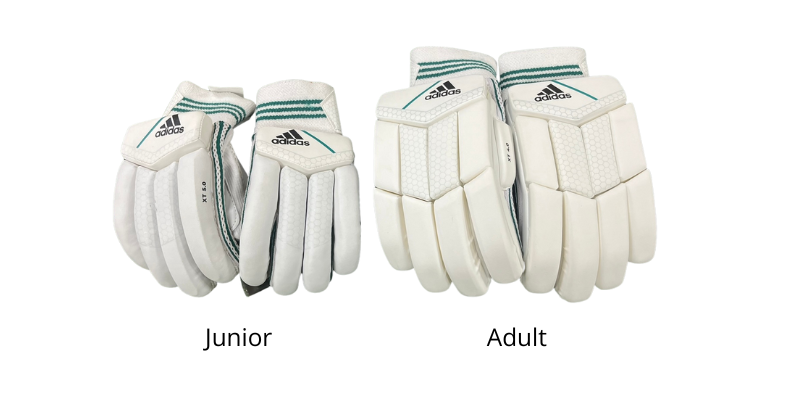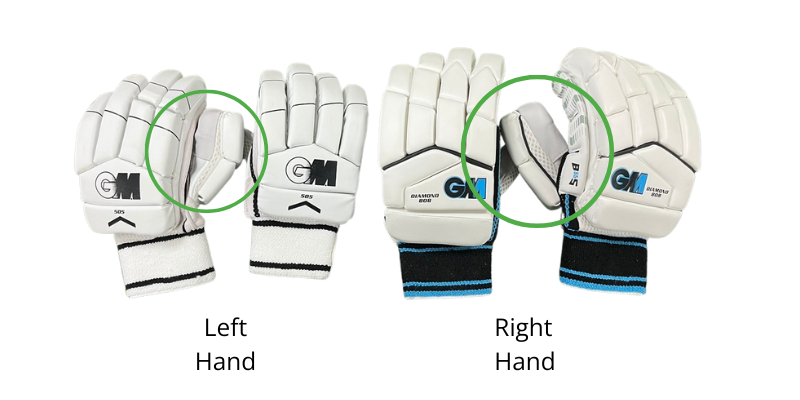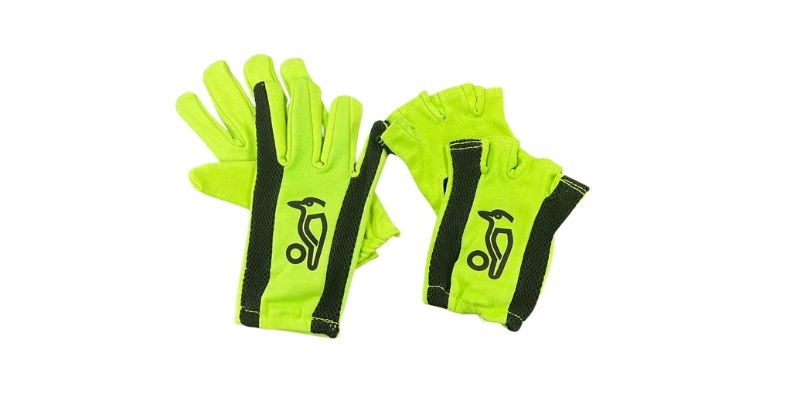How to Choose Your Cricket Batting Gloves?
In need of a new pair of cricket batting gloves? In this video, Richard & Neil explain what you should consider when looking to buy a new pair of batting gloves.

In need of a new pair of cricket batting gloves? In this video, Richard & Neil explain what you should consider when looking to buy a new pair of batting gloves.
Do you remember the first pair of batting gloves you used? Mine were a green rubber spiked pair from the school bag. They offered very little in terms of protection and didn’t look the best, but they did the job. Thankfully, protection levels in gloves have moved on considerably since those days.
Let’s take you through the key points you need to consider when selecting a pair of batting gloves, and I promise you they will be much better than my first pair!

Adult batters will use a different size glove compared to a junior batter. Adult sizes run from Large Adult down to Adult, flowing down to a Youth, then a Junior size and they can go even smaller down to an extra small size.
It goes without saying that the higher the level of cricket you play, the more protection you will need in your glove. If you play village cricket or are just starting your cricket career buying a more functional pair of gloves makes the most sense to us.
As always have an idea of how much you can afford to spend and don’t spend too much when you don’t need to.

Which way round you stand to face the bowler is important as batting gloves have specifically positioned protection for both right-handed batters and left-handed batters.
For example, a right-handed batter will have additional thumb protection on the right thumb. Those areas of the body are shown to the bowler when they release the ball.
Brands did experiment with ambidextrous gloves a while ago, but they didn’t seem to be very popular. It was difficult to make a universal thumb that you could change over and make it less bulky and appealing to wear.
Once you have put the gloves on, there should be a little bit of room between the end of the glove and your fingers.
If there is, then that is a good glove for you. If you have a lot of room to spare, try another size.
It is also worth checking the palm area as some players have wide hands and not all gloves fit comfortably through that area.
When cricket first started, we had batting gloves with open palms with spiked rubber on the back of the glove to protect the batters' fingers. That developed into what we would consider a more traditional sausage finger glove that is still popular today. A square-finger glove has also proved popular since its inception in the early 80s.
A sausage finger glove is filled with horsehair for added protection and the square finger glove is a strong dense foam that offers high levels of protection. Both are lightweight but they do feel different when you put them on.
Both styles of batting gloves come with breaks in the glove to allow for freer hand movement when gripping the bat.
On the top-level gloves, small blocks of bolster protection have been added over the years to the outside of the little and first fingers.
It was once commonplace to see double finger protection on the first and second fingers of the bottom hand, but that seems to not be as prevalent as it once was. Protection levels have improved over the years, and they don’t need to double up on the bottom two fingers as they once did.
Elasticated wristbands and Velcro straps have made gloves much more comfortable to wear. Historically, gloves had smaller straps that did the job but were not as comfortable as the wristband alternative. Also, wristbands help to stop sweat from dripping down the forearm on hot days.


Some batters like to wear inner gloves. It provides a layer of sweat protection between the hand and your glove meaning your gloves will last longer. Inner gloves come in two different types a full-finger version and a fingerless version. Fingerless inners have become quite popular as batters can feel the bat in their hands more than with the full-finger variety.
Top Tip – don’t forget to wash your inners regularly as they will stink out of your kit bag quickly!
A top-level batting glove for an academy player or a division 1 league cricketer would range from £75+
An intermediate-level glove for the regular club cricketer would cost you in the region of £50 - 75
A basic glove that would do a job for an adult cricketer would cost you £30 – 50
Junior gloves range from £25
TOP TIP – please be aware that gloves do take time to break in. The protection on the back of the glove needs time to mould to your hand size and shape and grip strength.
After you have worn them a few times they will loosen up.
Click here to see the range of gloves we offer at Serious Cricket, alternatively, please email Chris at chris@serioussport.co.uk for more information on the batting gloves we stock.